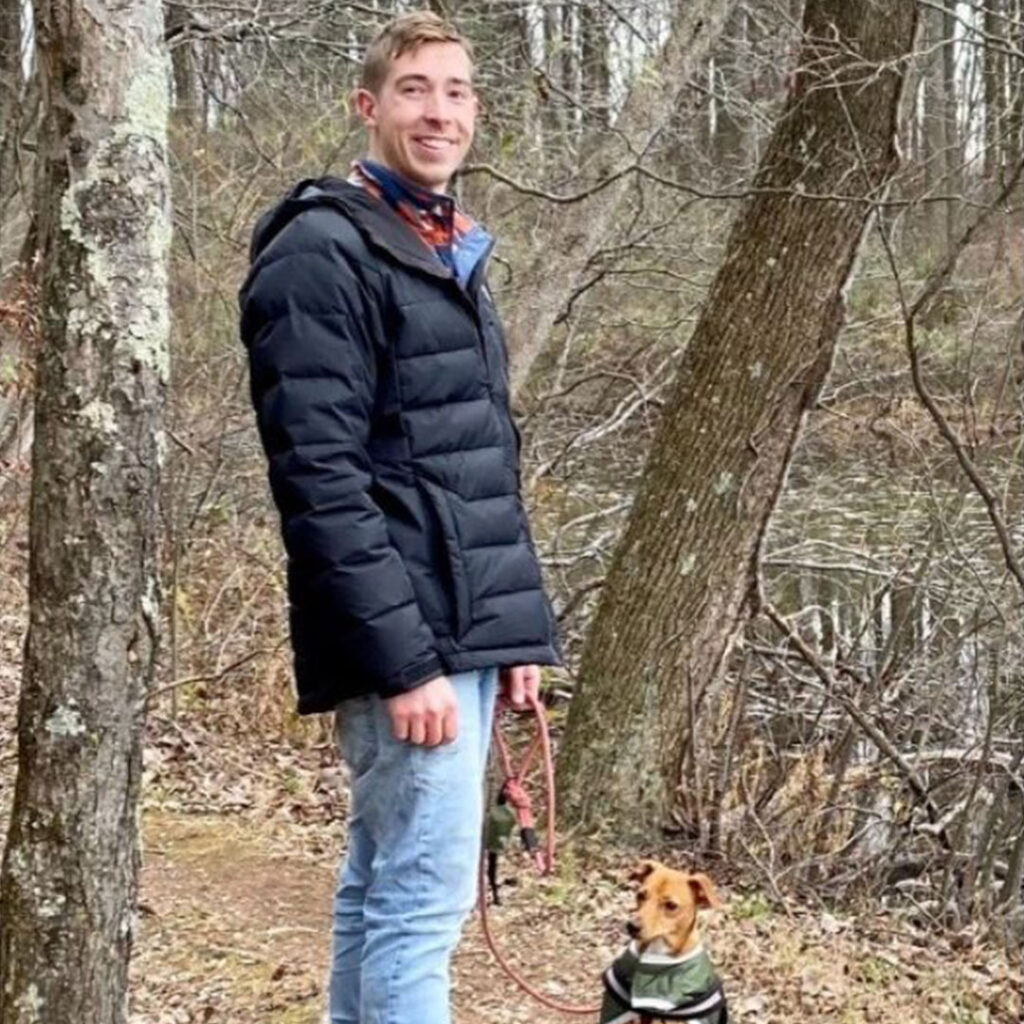
The homicide rate in Philadelphia has been soaring for the last few years, since the start of the pandemic and the aftermath of George Floyd led to 2020 being the most violent year suffered by the city in three decades and the second highest in six. Nearly five hundred people were killed that year, and the numbers have been rising ever since. In addition to the sorts of gang- and drug-related killings we might expect in urban areas and the collateral damage we might foresee when bullets are flying indiscriminately, there has also been an increase in violence affecting what we might normally consider regular people in regular parts of town, where armed robberies and the like are more distantly theoretical to most of us. Today, I’d like to share with you the story of one of those regular people, who lived in the neighborhood next door to where I lived for part of my academic career, and the person whose path he crossed one January evening in 2021. I’d like his story to survive, so that we can honor his loss with an understanding of how we got here and where we can go moving forward.
Milan Loncar was a recent college graduate, 25 and looking forward to the rest of his life. His girlfriend was moving in the following month, to his apartment in the up-and-coming and trendy Brewerytown neighborhood. That evening, though, he needed to take Roo, his Dachshund-Chihuahua mix, out for a walk. He stepped out with dog, keys, and phone, and was quickly approached by two men. As their paths intersected, the two perpetrators boxed Milan in, one of them pointing a gun at him. Milan did not struggle as they searched his pockets and came up empty. They proceeded to shoot him once in the chest, then fled without taking his phone or keys. Milan called for help and collapsed, dropping his phone but not his dog’s leash. His pleas for assistance came too late. He was rushed to the hospital but did not survive. One of the perpetrators was soon caught and has since been given a life sentence for second-degree murder and other charges.
The video of the attack is difficult to watch, and even harder knowing the ultimate ending. While the pre-assault cues are clear if you are looking for them, they happen quickly and in low light. In Milan’s place, would you have seen two young men splitting as they see you, one in front and one veering off to the side? Would you have thought it unusual in the split second before you were attacked, or would you see it as a cue to spin up your defensive posture? Would you have had any ideas of what you could do that might put the odds back in your favor, two against one? Would you, paying attention to your beloved pet, have noticed a gun coming out of a pocket before being shoved into your side? I have no blame or shame here. These things are difficult to spot and plan for, and it takes practice to be able to do so. We can speculate on the usefulness of a flashlight or a pepper spray in Milan’s other hand, a gun on his waist. We can consider the statistics of non-compliance and resulting survival, but we cannot know the outcome if any one thing changed. However, we know what did not work here, and we can honor Milan’s memory by not repeating the same strategies that led to his death.
It is intentional that I do not, up front, identify the race of victim and perpetrator here because it’s difficult to speak of crimes like these without veering into the politics of racism, but I’d suggest – and others who have studied this far more than me suggest – that the risk factors that are associated with creating the kinds of bad guys we see here cut across those lines with experiences like economic hardship, absent parents, and close exposure to violence. Our bad guy in this incident and his family report a difficult childhood with a drug-addicted custodial parent who struggled with homelessness, a witnessing of a fatal beating at age 12, a first arrest for assault at age 14, and multiple stays at behavioral health facilities. He was only twenty and on probation for one crime and out on bail for another when he killed Milan, and was caught in a car stolen in yet another unrelated carjacking. Two of his brothers were already in jail at the time, for additional crimes unconnected with any of our bad guy’s. Our bad guy grew up in a culture of violence where hurting people badly is a means to an end, no more consequential than crossing a street to get a burger, or a statement, as significant as standing on a corner and shouting. It is no surprise that he, too, participated in it. It was likely a matter of both pride and survival.
None of that excuses what this bad guy, this violent criminal actor, did. As individuals trying to stay safe today, none of that can be affected in the short term. We might influence whether and how we might drive societal change that might reduce the number of people who are shaped by these types of factors and who are free to try to harm us, but in the meantime, we simply have to know that they exist. We have to accept that they don’t think like us, don’t share the same kind of logic we do, don’t view the world in the same way as us. We can debate why that is, and we have some pretty good clues of how they got there and the paths that their minds take, but ultimately, we only have to be aware that we might share our spaces with people like them. If we are fortunate, we will be like ships in the night and only pass each other by and live another day. If we are not, like Milan, our paths will intersect. When that happens, we cannot rely, as Milan did, on the kind of response that people like us might find enough if we could imagine ourselves as bad guys: acquiescence, compliance, none of that may satisfy. Instead, we must do what Milan perhaps wishes he did, and meet violence with assertiveness and violence in defense of our lives because our lives are, indeed, at risk, even for no more than a failed, opportunistic mugging.
Nor can we or should we rely on being able to avoid crossing paths with people like this bad guy. When geographies overlap, it’s true that we become more likely to run into those who are not, as William Aprill would describe them, like us. Up-and-coming is another word for gentrifying, and the history and geography of where we live and play matter. Putting aside the fact that bad guys do, in fact, exist among us no matter where we may be, the closer we are to those spaces where violence is the norm, the more likely it is to spill over onto us. That possibility is not a sign that we should move further away. After all, we are not here to hide from that which allows us to thrive. We are not here to avoid places and people who excite us, to avoid walking our dogs and dreaming of our loves. Caution may be necessary, and suspicion and the capacity for violent self-defense, but all in service of what it takes for us to flourish in the lives we choose, even if that means intentionally brushing against danger, knowing it may come to find us regardless of our efforts.





